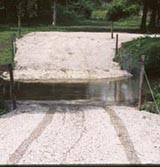Disposing of Animal Mortalities
Large Animal Mortalities
Animal deaths are a regrettable but sometimes unavoidable part of livestock production. Once an animal dies, it is important to handle and dispose of the carcass in a way that reduces the potential for impacting the health of humans and other livestock and minimizes the impact to the environment, such as pollution of groundwater or surface water. It is recommended that dead animals be disposed of within 48 hours of discovery in a way that follows state guidelines.In May 2009, the Tennessee Department of Agriculture released its guidelines on handling mortalities in a short policy document entitled Policy Concerning the Disposal of Dead Farm Animals and The Disposal Offal from Custom Slaughter Facilities.
In Tennessee, dead animal carcasses are defined as a “solid waste,” so are regulated by the Tennessee Department of the Environment and Conservation (TDEC), Division of Solid Waste. The disposal of dead animals falls under the solid waste regulations outlined by TDEC.
The methods that livestock producers in Tennessee can choose to dispose of their dead animals include:
- On-farm burial
- Composting
- Landfilling
- Burning
- Incineration
- Rendering
Permits are not required for on-farm burial as long as standards set by the United States Department of Agriculture (USDA) are followed. These include making sure you follow setbacks from sources of water (wells and surface water) and that the animal is buried more than two feet away from bedrock or water tables. Burn permits are required in every circumstance where they would normally be required for open burning. Burn permits are issued by the Tennessee Department of Agriculture’s Division of Forestry from October 15 through May 15.
Some local (city and county) ordinances regarding open burning may take precedence over the Division of Forestry rules. When burning carcasses, the materials used to burn are restricted to #1 or #2 grade fuel oils, vegetation grown on the property or wood waste.
USDA guidelines should also be followed if you elect to compost the carcasses. Composting usually requires creating a two-foot base of woody by-products such as wood chips, sawdust or wood shavings, then covering the dead animal with at least two more feet of the wood by-product.
Not all landfills in Tennessee will accept dead animals. Only Class I landfills will accept them without written permission from TDEC.
If incineration is used, no permits are required as long as the incinerator is only used for carcass disposal, and has a capacity not greater than 500 lbs per hour or a burner capacity less than 400,000 BTU’s per hour.
In the past, rendering companies often picked up carcasses from individual farms; however, in recent years there has been a decline in the number of companies offering this service. There are also strict restrictions on the rendering of cattle under 30 months of age.
Where losses involve carcasses of more than 10,000 lb the state veterinarian must be notified. In the cases of larger losses, landfilling, composting and rendering may be the only viable options.
For most producers, burying, composting or landfilling will be the best options for disposing of their dead animals.
This information is further summarized in The University of Tennessee Extension publication W255, Disposing of Large Animal Mortalities.
Animal Mortality Quick Reference
- Large Animal Mortalities
- Burying Large Animals
- Composting Large Animals
- Landfilling Large Animals
- Poultry Mortality Incinerators
- Dead Poultry Composting
- Mortality Publications

